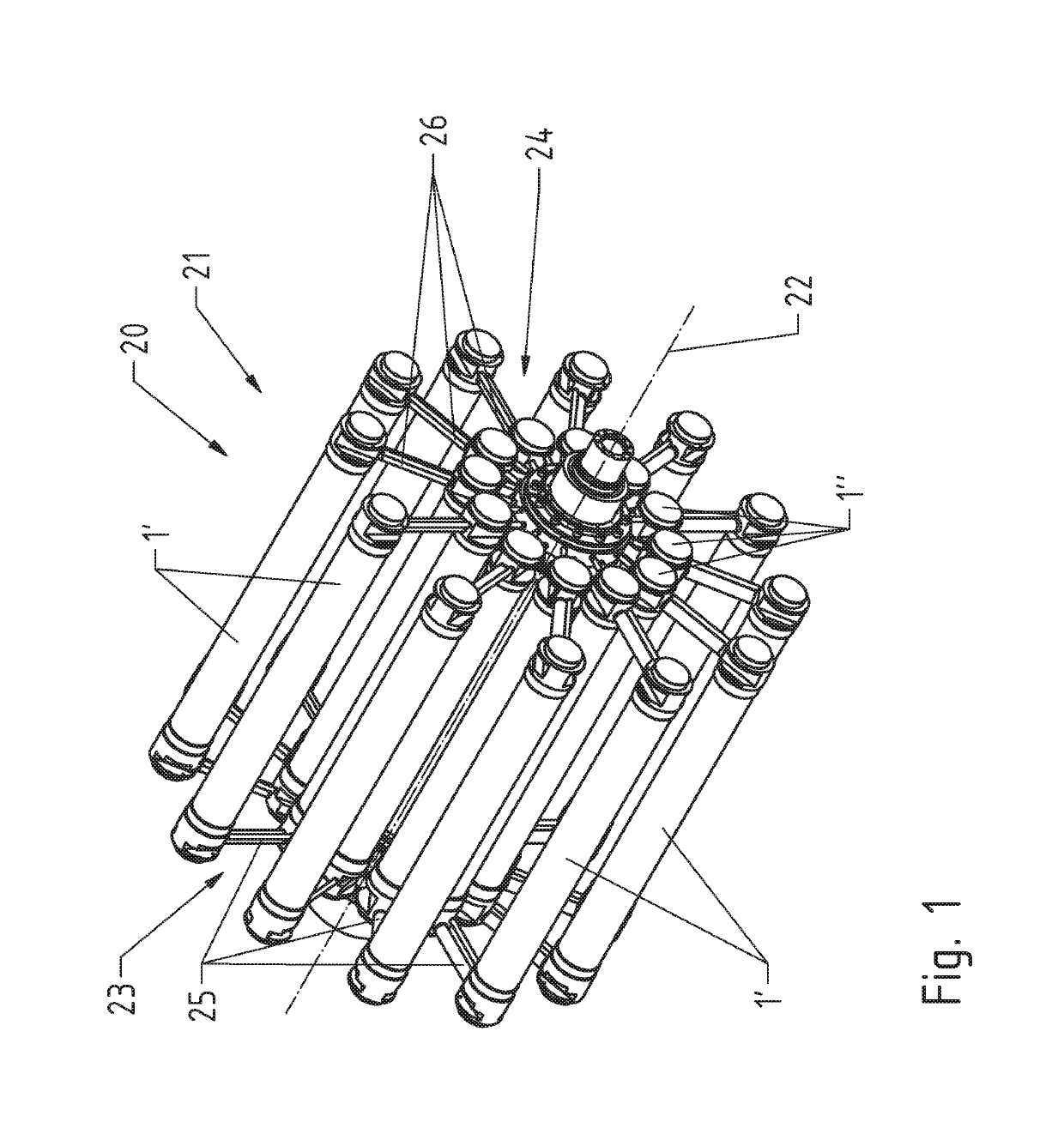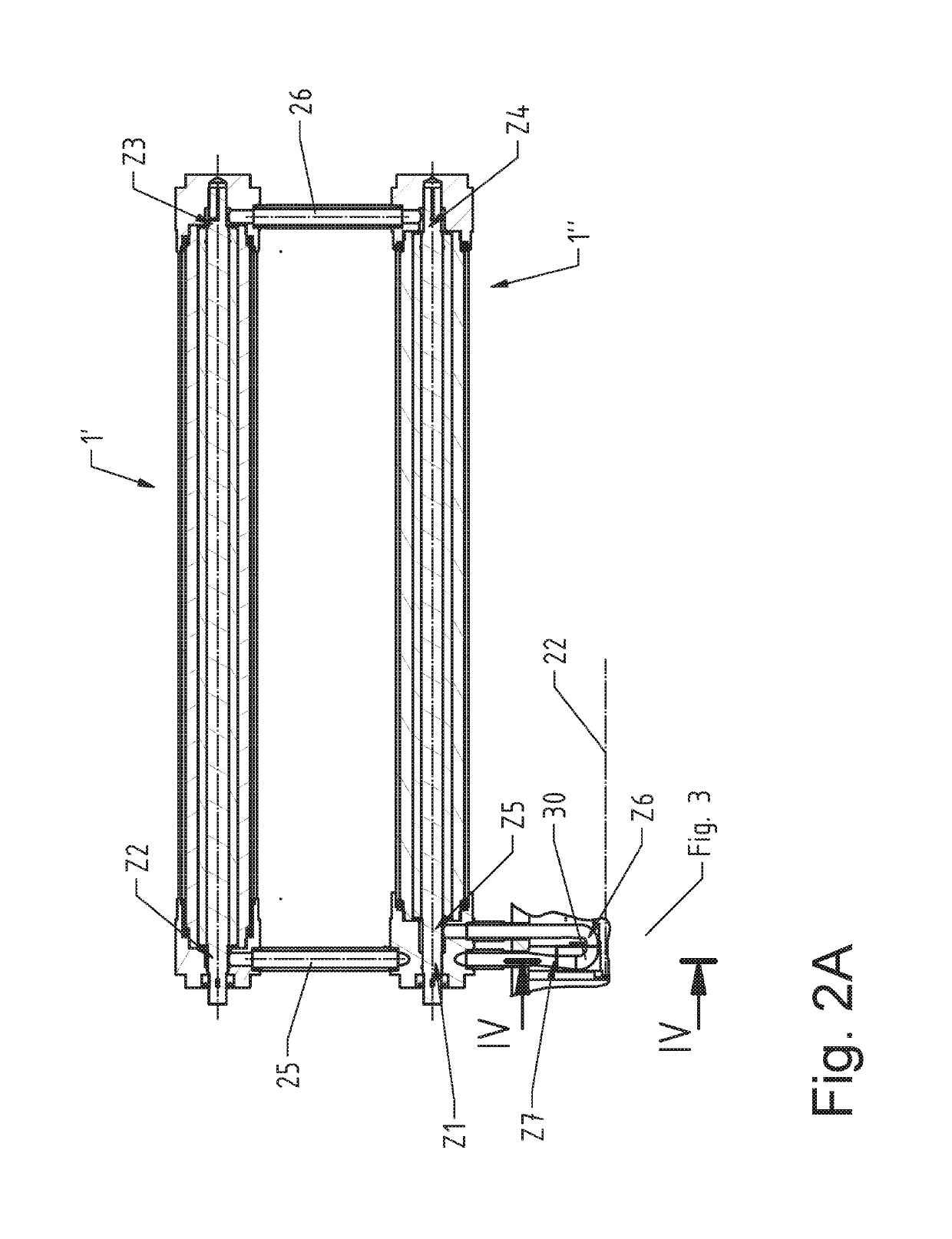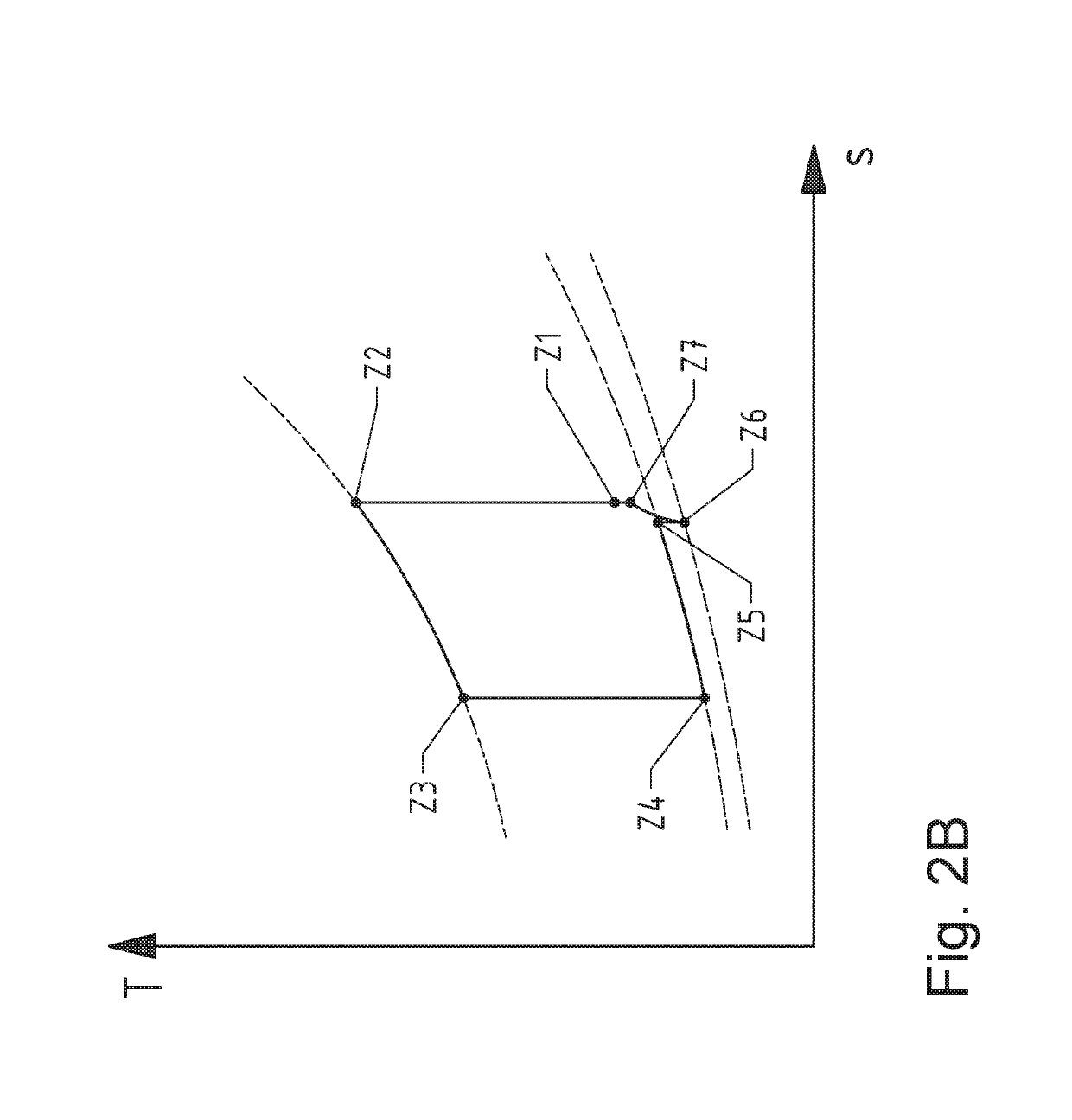Device and method for converting thermal energy
a technology of thermal energy and converting device, which is applied in the direction of compression machines, refrigeration machines, lighting and heating apparatus, etc., can solve the problems of fundamental faulty consideration, insufficient arrangement of impellers known from the prior art, and inability to increase, so as to achieve efficient compression of working medium, increase centrifugal compression effect, and increase the effect of centrifugal acceleration
- Summary
- Abstract
- Description
- Claims
- Application Information
AI Technical Summary
Benefits of technology
Problems solved by technology
Method used
Image
Examples
Embodiment Construction
[0046]FIG. 1 shows a device 20 for converting thermal energy using mechanical energy and vice versa, which is used as a heat pump in the embodiment shown. The device 20 includes a rotor 21 which is rotatable around a rotational axis 22 by means of a motor (not illustrated). The rotor 21 includes a compressor unit 23 and an expansion unit 24, which have flow channels for a working medium. When flowing through the rotor 21, the working medium, for example a noble gas, passes through a closed cycle process, which includes the working steps of a) compression of the working medium, b) heat exchange between the working medium and a heat exchange medium in an outer heat exchanger 1′, c) expansion of the working medium, and d) heat exchange between the working medium and a heat exchange medium in an inner heat exchanger 1″. For this purpose, the compressor unit 23 has compression channels 25 extending substantially in the radial direction, in which the working medium flows to the outside in...
PUM
 Login to View More
Login to View More Abstract
Description
Claims
Application Information
 Login to View More
Login to View More - R&D
- Intellectual Property
- Life Sciences
- Materials
- Tech Scout
- Unparalleled Data Quality
- Higher Quality Content
- 60% Fewer Hallucinations
Browse by: Latest US Patents, China's latest patents, Technical Efficacy Thesaurus, Application Domain, Technology Topic, Popular Technical Reports.
© 2025 PatSnap. All rights reserved.Legal|Privacy policy|Modern Slavery Act Transparency Statement|Sitemap|About US| Contact US: help@patsnap.com



